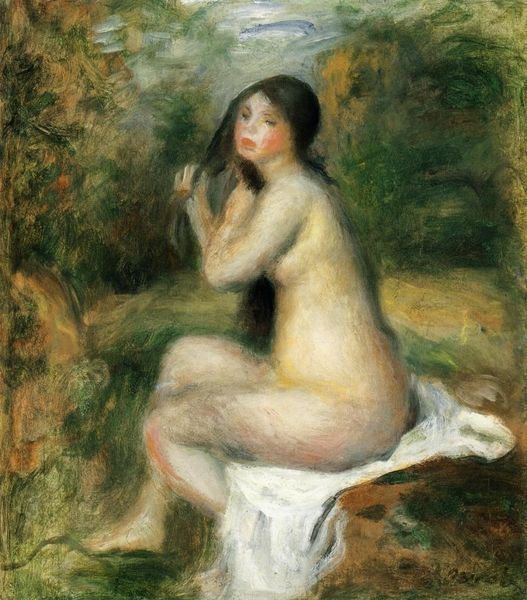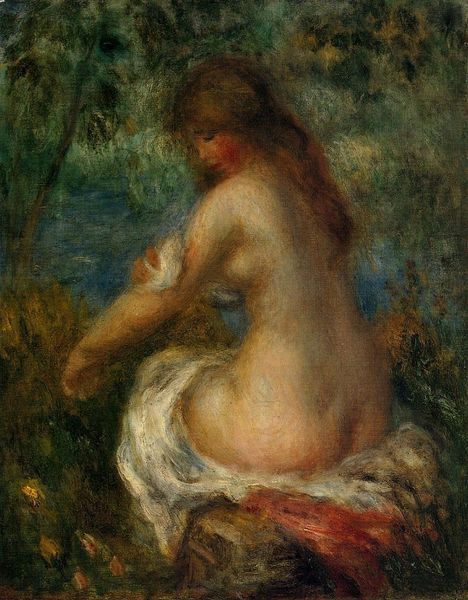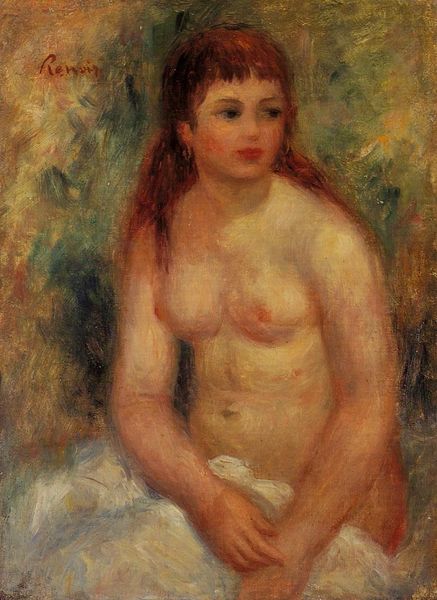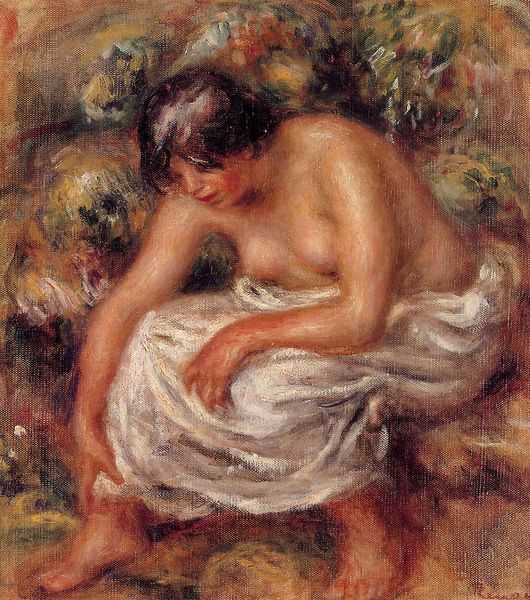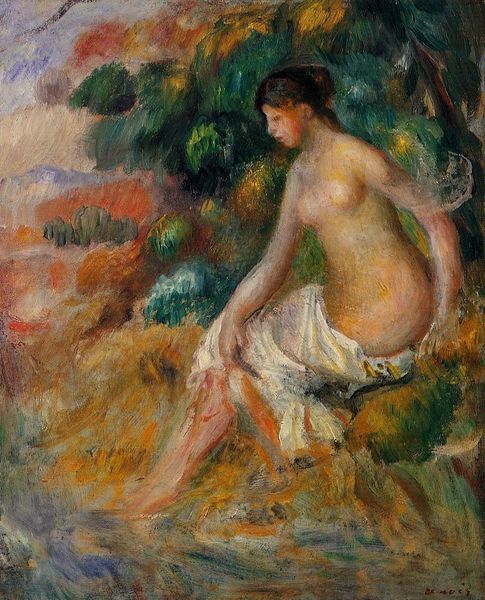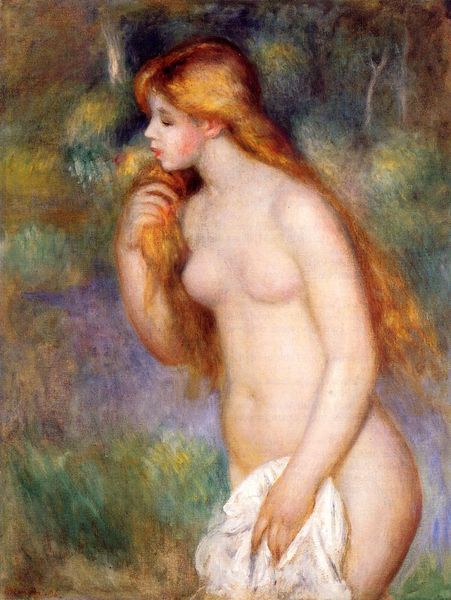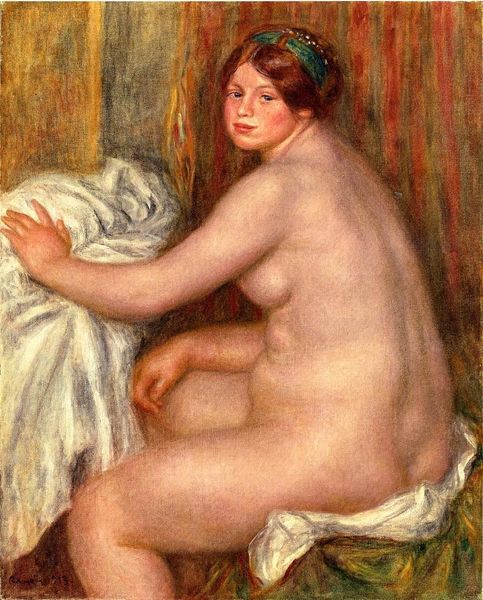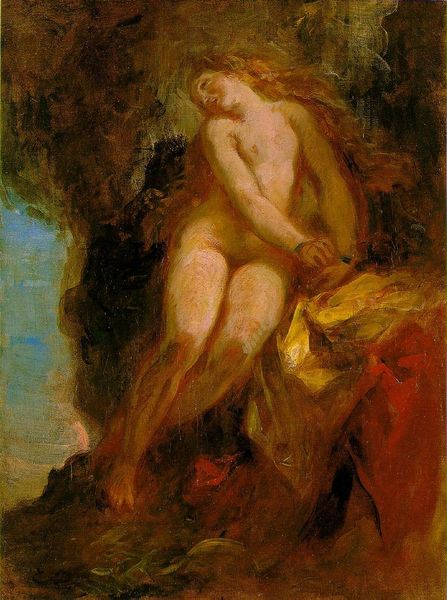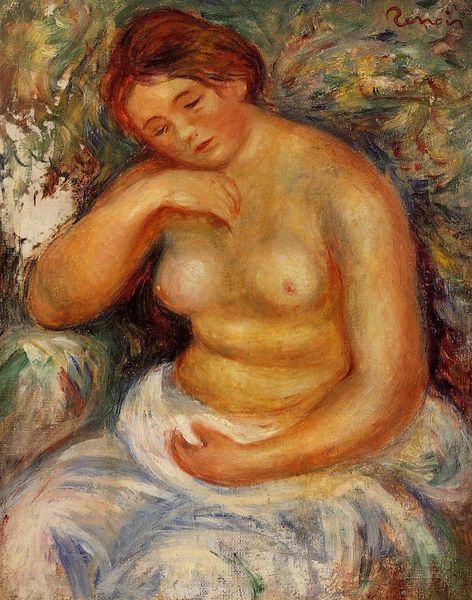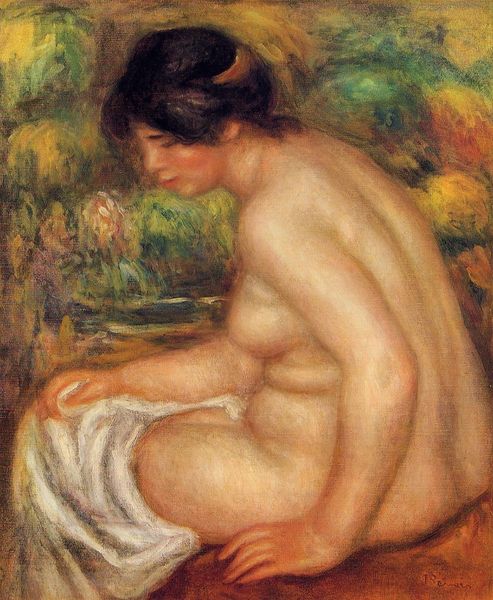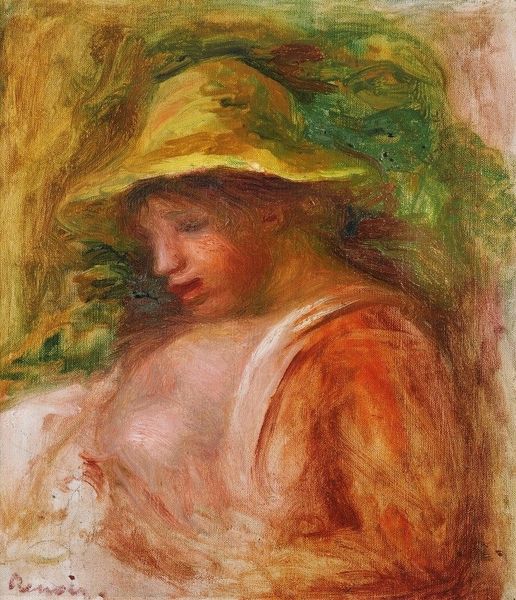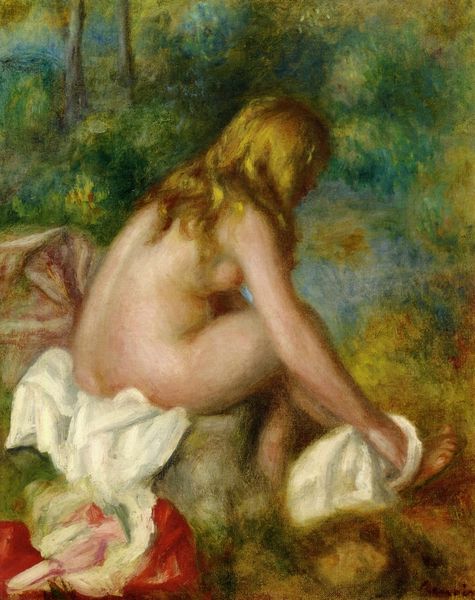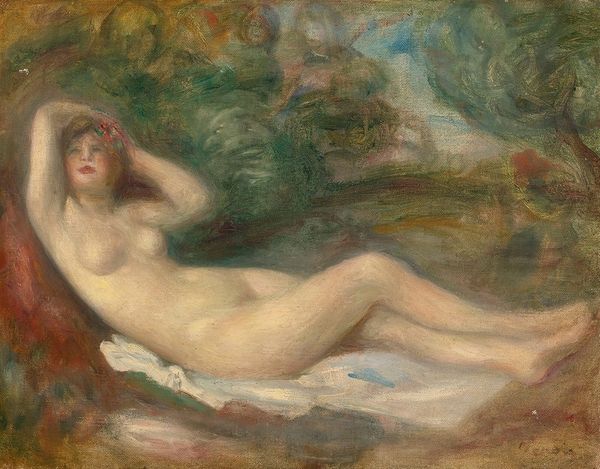
Copyright: Public domain
Curator: This is Renoir's "Bather," painted in 1889, a quintessential example of his later Impressionist style. It's currently held in a private collection. Editor: My first impression is warmth. The composition seems to melt into itself with all those blended colors, especially around her form. It's really a showcase of luminous materiality. Curator: It's more than just materiality; it's also about idealizing femininity through a male gaze, reflecting the social constraints of the time on women’s bodies. This bather isn’t caught in a candid moment, she’s posed and presented. We must remember the dynamics of power present. Editor: But even if she is posed, I see how Renoir handled the oil paint in layers, almost sculpting the light. Note how the fabrics around her pool the light, and reflect the making and the moment so palpably. It begs questions about how the fabric was made, the labor, the conditions—even how the pigments themselves were sourced. Curator: Certainly, analyzing the physical production is vital, yet also look beyond. Who was she? What were her rights? What’s crucial is that through careful staging and symbolism Renoir subtly reinforces the norms of his period through beauty ideals. How does his choice affect real women in real contexts? Editor: It’s difficult to ignore how Renoir transforms the pigments themselves, elevating everyday labor—preparing canvas, mixing paints—into a gesture towards the monumental. It connects art-making itself with physical labor. The artist’s hands making their mark through the means of production! Curator: But the lasting impact of these portrayals must be investigated beyond a mere aesthetic pleasure. Her nudity is idealized and presented for consumption, so exploring power relations between gender is necessary to interrogate the social structures of Renoir’s Paris. Editor: And yet, when looking closely at brushstrokes, I’m reminded how the act of applying paint requires bodily motion—every stroke and choice a residue of movement and labor. The materiality of that interaction. I also keep wondering how many iterations Renoir made before settling on these choices. Curator: By positioning “Bather” in an intellectual debate about beauty ideals in 19th-century Paris, and by situating it in contemporary dialogues, the work remains poignant even today, encouraging us to confront social politics and how these continue to impact individuals. Editor: Considering materiality alongside social and historical conditions certainly opens up further interpretations and a renewed connection to the making, consumption, and display. A layered experience.
Comments
No comments
Be the first to comment and join the conversation on the ultimate creative platform.
